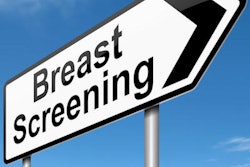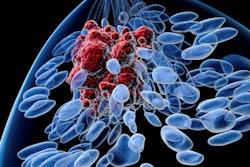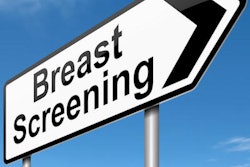
Italian researchers found that younger women who were screened annually with mammography had higher recall rates than older women who had biennial screening, according to a study published online on 18 March in European Radiology.
The findings add fuel to the debate about when women should start breast cancer screening and how often they should receive it, wrote the team led by Dr. Lauro Bucchi of the Romagna Cancer Institute in Meldola.
"Published studies on the performance measures of an annual screening protocol for women aged 45 to 49 years in a public health setting have so far been anecdotal," the group wrote. "This article is a contribution to bridge this knowledge gap."
European guidelines advise that national breast screening programs focus on women ages 50 to 69. A handful of countries have introduced screening for women 40 to 49 or 45 to 49 years old, and interest has been rising in lowering the guideline to at least age 45.
In Italy, women ages 45 to 49 have been invited to annual screening since 2010. Therefore, Bucchi and colleagues sought to compare the results of five years of annual mammography screening in women ages 45 to 49 with five years of biennial screening in women ages 50 to 54 and 55 to 69.
The study included data from 1.5 million mammograms acquired between 2011 and 2015. The researchers tracked recall, invasive assessment, surgical biopsy, and cancer detection rates for first screening exams and second/subsequent screening exams.
At the first screening mammography exam, the recall rate was 11% higher for younger women compared with both older groups, although the surgical referral and surgical biopsy rates were lower, the researchers found. The prevalence of detected ductal carcinoma in situ (DCIS) was lower in younger women than in the two older groups, as was the invasive cancer detection yield.
On second and subsequent screening mammography, however, younger women experienced much higher recall rates than their older counterparts did.
| Rate ratios by screening mammography performance measure | ||||
| Performance measure | Rate ratio at 1st screening exam | Rate ratio at 2nd, subsequent exams | ||
| 45-49 vs. 50-54 | 45-49 vs. 55-69 | 45-49 vs. 50-54 | 45-49 vs. 55-69 | |
| Recall rate | 1.11 | 1.11 | 2.10 | 2.77 |
| Incidence rate of noninvasive cancers | 1.19 | 1.24 | 2.23 | 3.32 |
| Incidence rate of invasive cancers | 0.94 | 0.94 | 1.63 | 1.56 |
| Surgical biopsy rate | 0.68 | 0.45 | 1.35 | 0.88 |
| Detection rate of benign lesions | 0.90 | 0.98 | 1.56 | 2.71 |
| Detection rate of DCIS | 0.66 | 0.63 | 1.29 | 1.07 |
| Detection rate of invasive cancers | 0.63 | 0.31 | 1.30 | 0.67 |
| Total cancers detected | 0.63 | 0.37 | 1.30 | 0.74 |
What can be concluded from these mixed results? More research is necessary, Bucchi and colleagues noted.
"Compared with five years of biennial screening in the age range 50 to 54 and 55 to 69, five years of annual screening between age 45 and 49 were associated with two- to threefold higher cumulative recall rates at second and subsequent screens," the group concluded.



















